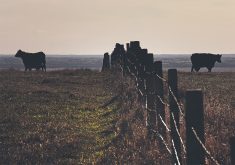We’re rapidly becoming one of those farms where old equipment goes to die. You know, the kind of farm with outdated, broken down equipment scattered everywhere. In most circles, this isn’t usually considered the hallmark of a successful, progressive farm.
We do try to keep our machinery row organized with equipment lined up and not just randomly abandoned, but the rows keep getting longer.
“Why do you need five pickup headers when we rarely use a pickup header on the combine?” asked my wife one day. Very good question.
Read Also

Budget seen as fairly solid, but worrying cracks appear
The reaction from the agriculture industry to prime minister Mark Carney’s first budget handed down November 4th has been largely positive.
We have one salvage combine that we rob parts from and one recently retired combine destined for salvage. As well, we run two slightly newer combines, the next model up from those retired.
Each of those combines came with a pickup header and the last purchase came with two. We didn’t want or need those last headers, but the seller didn’t want them either, so they’re lined up on equipment row.
And whoever said that two heads are better than one wasn’t talking about straight-cut combine headers. It would be great to have a header for each of the combines that would be suitable for all the different crops, but instead we have an assortment of flex and rigid headers.
I’ve long advocated that farms need to watch their equipment investment per acre. It’s easy to have too much money invested in iron, a depreciating asset. Unfortunately, when you’re buying older equipment and then using it for 10 years, there isn’t much salvage value if you try to sell. While it probably makes economic sense to keep it around for parts rather than selling it for scrap metal, it’s also an eyesore.
Many of our museum pieces are still in active use. The mid-70s tandem grain truck is slow and you can’t work it too hard before the engine overheats, but for short hauls to and from the field it still works.
The little Ford tractor with the front end loader isn’t pretty, but it’s used steadily despite being about 45 years old. Eventually it will need to be replaced with something newer, but for now it still does the job.
We’ve managed to keep the 1997 pickup running and it’s handy to have, but best not to take it on any long trips anymore. When it finally needs a repair with a price tag too large to justify, I’ll try to find a way to get it off the farm rather than parking it.
We do have a good tractor, seed drill, seed cart, a small high clearance sprayer and a couple grain conveyors so not all our stuff is outdated and undesirable. No matter the size of your farm, it’s good to know your equipment investment per seeded acre. It gives you an idea of whether you have too much money invested in shiny metal.
Some dryland grain farms get by with $300 or less of equipment investment per seeded acre. Others have more than $700 an acre invested and don’t even know it. Too much money invested in equipment means your fixed costs are probably out of line compared to other producers.
Even though we run a lot of older stuff, our investment is still well over $300 an acre when you assign market value to all the pieces of equipment we’re using.
But we don’t buy new equipment to impress the neighbours and we aren’t above keeping retired relics for salvage.
Kevin Hursh is an agricultural journalist, consultant and farmer. He can be reached by e-mail at kevin@hursh.ca.















